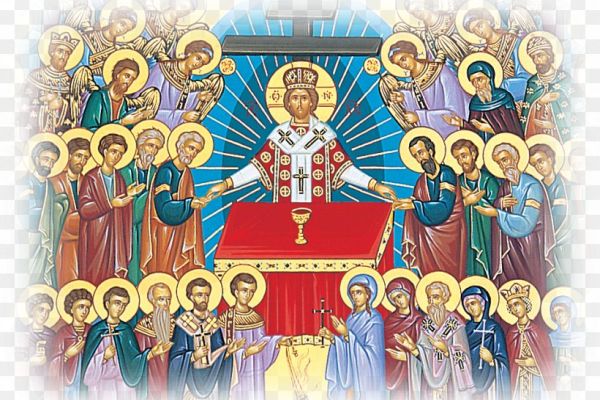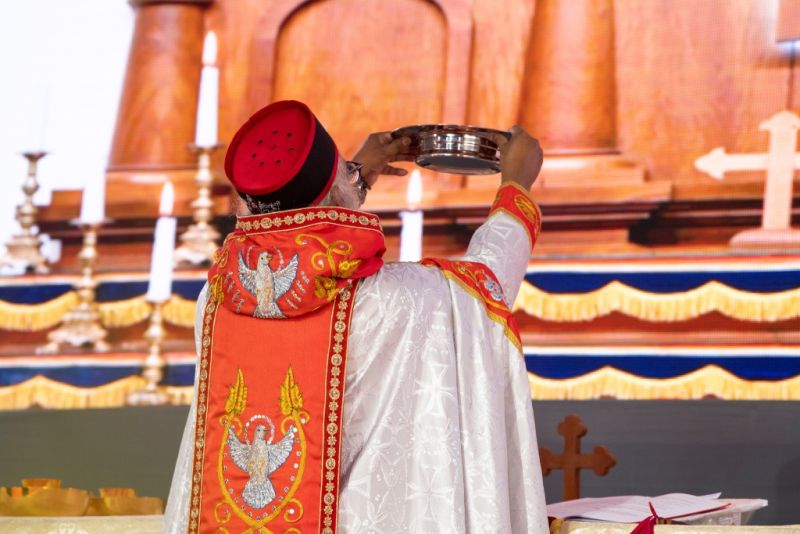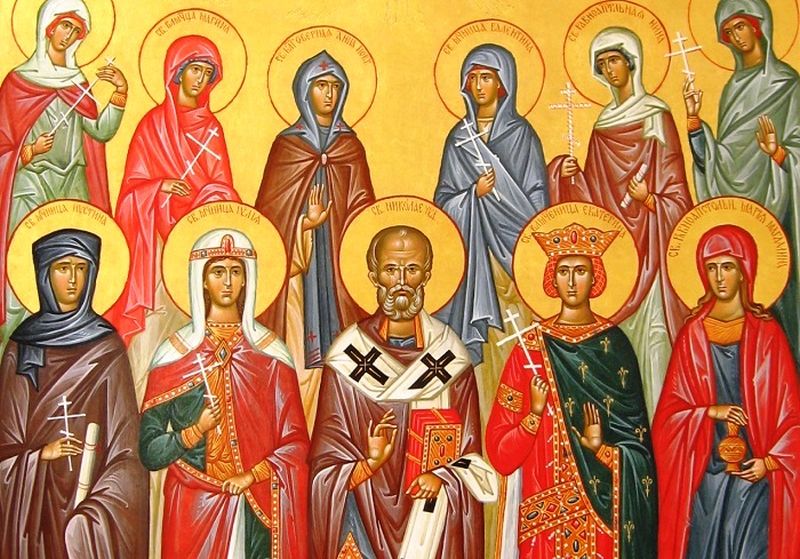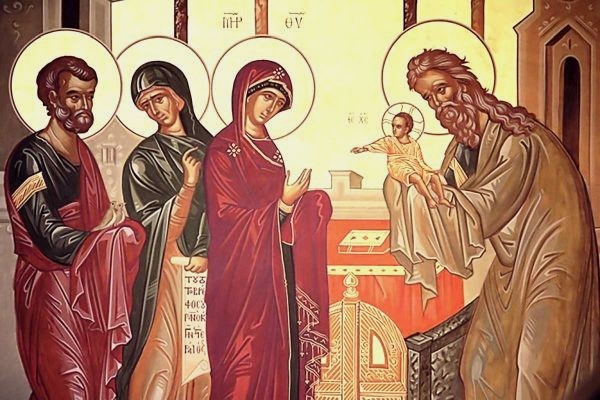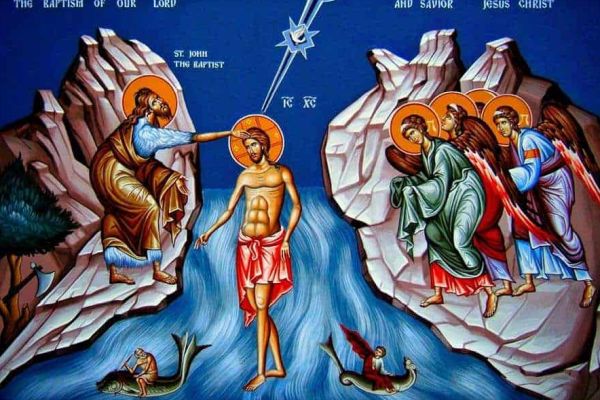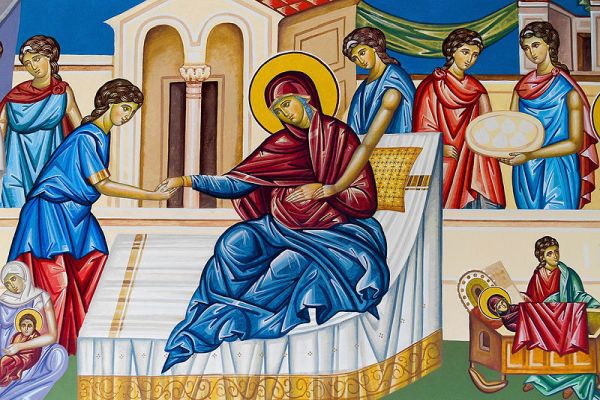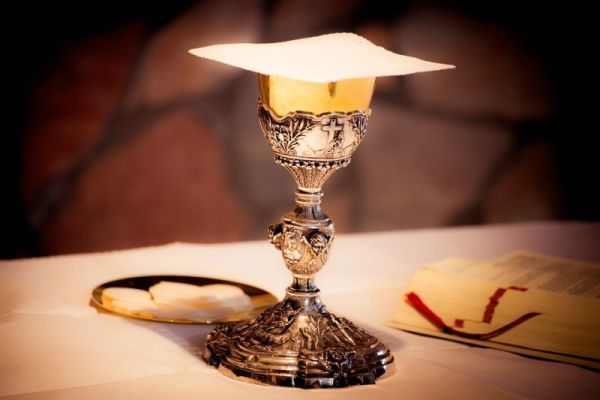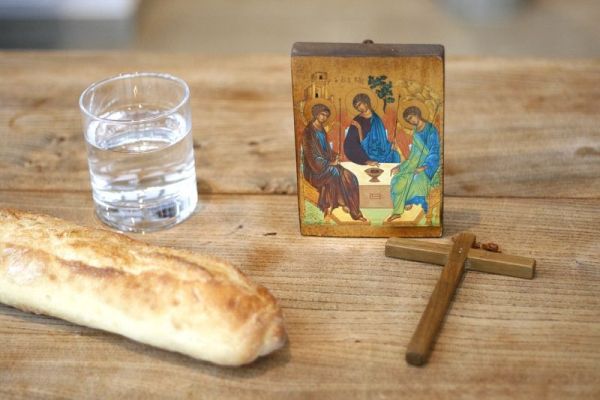E – Elevation
The second letter in M E R C Y, the acronym for remembering what happens during the Eucharist is E and it stands for ‘Elevation.’ During the Divine Liturgy we are called to elevate or lift-up, ourselves – our minds, our hearts and our spiritual eyes, so that, we can see what Divine Liturgy really is – joining in heavenly worship!
No, we are not alone!
Once a priest was sad after celebrating the Divine Liturgy. Seeing him sad a saint asked him, why are you sad? The church was not full today; there were many empty spaces, he replied. The saint responded by saying – but the church was full! Confused at the answer of the saint, the priest pointed out to the saint – didn’t you see the empty spaces? A lot of people didn’t come today. To this the saint replied – oh no, it was full. Didn’t you see the angels and the saints who joined with you in worship? The church was fully packed!
If you consciously try and listen to the words which are being said during the ‘Anaphora’, you will understand that you and I are not alone in that worship. We are coming to a place where thousands and thousands of angels and the saints who have gone ahead of us are joining with us in that worship1! Yes, they (saints of old) keep the feast with us.
No wonder St. Ignatius says – “So then let us celebrate this heavenly joy, together with the saints of old who get the same feast” (and by feast, he was referring to the Eucharist).
We are not alone in our worship of the creator!
The Anaphora
The central and most significant part of the Divine Liturgy is the Anaphora. The word ‘ana’ means ‘up’ and ‘phora’ means ‘carry’. So literally that word means to ‘lift up’.
When you look at the liturgical actions which happen during this time, you find that this is where the priest or the celebrant lifts up the bread and the wine from the altar to receive the sanctification by the Holy Spirit.
While it’s true that the elements (i.e., the bread and the wine) are lifted up during this time, that’s not the only ‘lifting-up’ which is happening.
Listen to what the celebrant says during this part of the liturgy:
“Let our hearts and minds be above where the Lord Jesus is seated at the right hand of the Father.”
And then the congregation responds by saying,
“They are with the You, O Lord our God”
It’s like a dialogue between the celebrant and his congregation with the celebrant reminding his congregation – ‘please listen, it’s time for us to focus; it’s time to deliberately remove our minds far from the things which are happening around you; let us elevate, lift up, (not just the bread and the wine but) ourselves too!’ And then we respond– ‘yes; Oh, yes, I lift up my mind, my heart, to where You, O God are seated2.’
Does this not remind you of what the holy prophet Isaiah saw – God sitting on the throne which was high and lifted up?!3’ And oh yes, how can one forget the ‘angelic hymn’ – Holy, Holy, Holy which Isaiah hears.
Guess what – that’s the same pattern the Divine liturgy also follows!
So, you see, in the Divine Liturgy, we are not following a man invented pattern of worship, rather the pattern of heavenly worship which we see in the Scriptures4 .
But I wish to say one more thing here – not only are we in the presence of the Holy Trinity and the angels, but we are also in the presence of thousands of saints, those who have gone ahead of us and are now part of the cloud of witnesses5.
So certainly, we are not alone!
The Prayer of the Saints
As we move on, right in the middle of Anaphora, we have a part where we can bring our prayer requests in front of the heavenly throne. Here we are expected to bring our prayer requests to God but also specifically to ask the ‘saints of old’ to pray for us.
Let me be honest here. I had difficulty at the start of my journey into orthodoxy, trying to ask saints who have departed from us to pray for me. Asking someone who’s dead to pray for me sounded and felt weird. This was because of one simple misunderstanding I had – that is – once dead (in Christ), you have no role to play in the ‘church.’ Because I thought – church consisted of only those who were alive on earth!
I forgot that scripture teaches me that when I come to worship, I come to the church of the firstborn, to the spirits of those who have been made perfect. I forgot that there is a cloud of witnesses which surround me – who are the saints who departed from us on earth. So yes, they are active! They are also part of the church! I also conveniently forgot that Jesus said about His heavenly Father – I am the God of Abraham, Isaac and Jacob and He also said, I am the God of the living, not the dead6!
So the saints who have departed from the earth are still active and very much part of the church!7
Now think about it – I can ask somebody whom I can see physically (is alive on earth) to pray for my child, without any problem. But then, why is it so difficult for me to ask a ‘saint of old’ – someone who has departed this world after having lived a spiritually successful life and fought the good fight of faith, to pray for my child? Afterall, won’t the prayer of a saint who has finished his or her life on earth, overcome the struggles of the sinful world and has gone on to the next, and whose focus is not their family, or themselves, or the world, but is simply to serve the church, and serve us (the struggling ones8), be more powerful and effective than the prayer of a weak and struggling human being alive now? Of course the prayer of saints of old will be more effective!
Once I understood this, I realized that –I am not alone. I am surrounded by a cloud of witnesses9, who are cheering me on, who are praying for me, who want me to run this race of faith and finish it well!
So, what does this mean for me?
It means that – in my struggles, I’m not alone. I may feel lonely, but I’m not alone. In my family problems, my marriage troubles, my struggles with my children, my struggles at home, in my studies, wherever I am, I am not alone. There are those ‘saints of old’ who have gone ahead of me, have finished the race of faith and are ever ready to help me!
In Orthodox churches, you have icons of Saints all around. They are placed for a reason – to encourage us, so that we can imitate their faith10!
Conclusion:
•So, during Anaphora – when we come to the part where the bread and the wine are ‘lifted up’, remember, we are invited to lift our spiritual eyes, minds and hearts to see heavenly worship.
•Remember that I am not celebrating the Divine Liturgy alone! There are thousands or angels and saints of old who are worshiping with me.
•When we bring our pray requests to the ‘throne’ of God, we can boldly and confidently ask for prayers from the ‘saints of old’ – and yes, God will hear and answer our prayers.
Amen.
Click here to read the 1st part of this devotional. Click here to read the 2nd part of this devotional. Click here to read the 4th part of this devotional. Click here to read the 5th part of this devotional.
For Further reading:
1. Eucharist– Moran Mor Athanasisus Yohan I Metropolitan 2. The Eucharist and Liturgical Worship (Chapter 6), Know the Faith – Rev. Michael Shanbour1Heb 12: 22-24
2Rom 8: 34, Col 3:1, Heb 1:3, 10:12 & 12:2, I Pet 3:22, Eph 2:6
3Isa 6:1-3
4Revelation 4:8 & Isaiah 6:3
5Heb 12:1
6St. Mark 12:26,27
7Those who have departed the earthly bodies but are part of the church are called – Church Triumphant
8The church on earth is referred to as Church Militant since we are still ‘fighting’ our way through this life.
9Heb 12:1
10Heb 13:7
